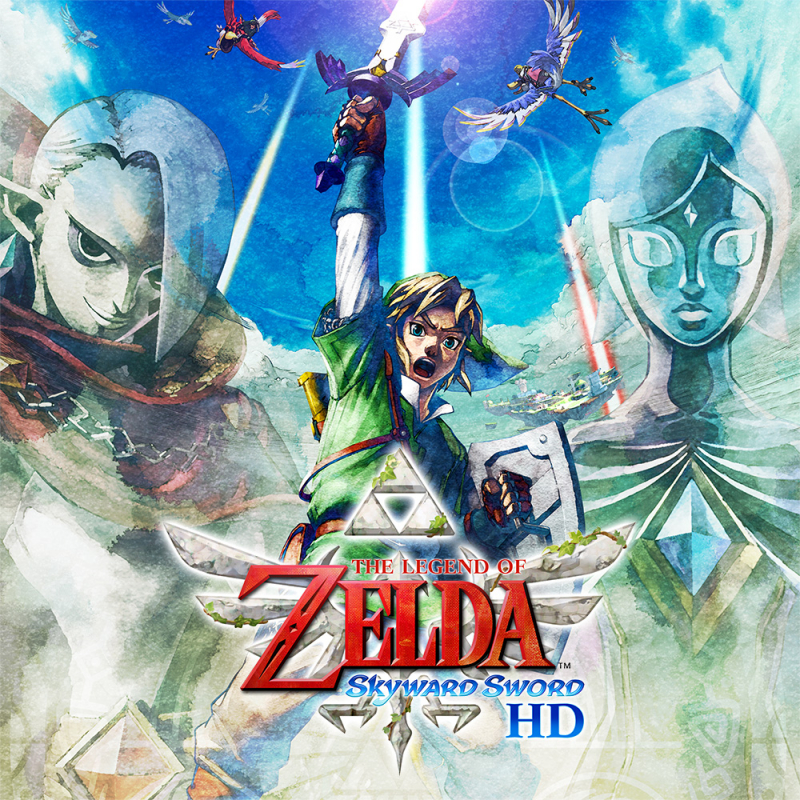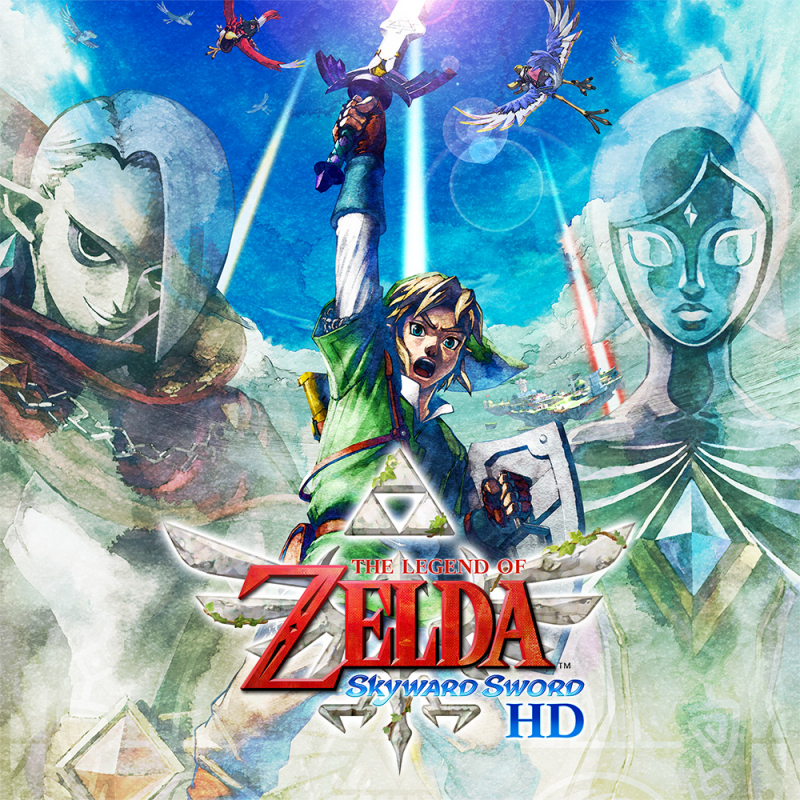Existing User Log In
New User Registration
Register for a free account to gain full access to the VGChartz Network and join our thriving community.





America - Front


America - Back

04th Aug 2021 | 10,022 views
The Legend of Zelda: Skyward Sword released on the Wii in 2011 to much expectation from Zelda fans, the design team, and Nintendo's financial department. In addition to motion controls being an integral part of the game, Nintendo took a more narrative, cinematic approach, complete with the series' first orchestral score, compared to its four 3-D predecessors. Unfortunately, for many gamers, Skyward Sword fell short, which in turn led to the game falling short of Nintendo's sales expectations. Many of Skyward Sword's shortcomings were the results of Skyward Sword getting in its own way. Many of the design choices Nintendo would make for its next big-budget Zelda, Breath of the Wild, were a direct response to Skyward Sword's perceived and actual shortcomings.
Now, for Skyward Sword's tenth anniversary and the 35th anniversary of the Zelda series as a whole, Nintendo has released a HD remaster of Skyward Sword for the Switch, adapting SS's motion controls to the Joycons and even offering a Pro Controller option. Does this remaster address the issues that the original Wii release had? For the most part, yes.
First off are the controls. The motion controls attracted a lot of complaints from gamers. In addition to the fact that motion controls had lost much of their novelty by 2011, Skyward Sword's controls were very imperfect. It required the use of Wii Motion+, yet it still required frequent re-calibration by laying the Wii Remote on a flat surface, frequently interrupting game play. Wii Remote Plus motions were still not 1:1 with the on-screen action. These problems were more pronounced if you were using a Wii Remote with the Wii Motion+ adapter rather than a newer Wii Remote with Wii Motion+ built in. However, compared to the Wii version of Twilight Princess, motion controls are baked into Skyward Sword's core design to a much greater degree, with most of the game's combat, puzzle-solving, and even general interaction with the game world being dependent upon motion controls. Removing the motion controls completely would have required Nintendo to almost rebuild Skyward Sword from the ground up. The Switch version gives you several options for controls. Two JoyCons can be used to play the game more like the Wii version, with full motion controls. The JoyCons generally function better than the Wii Remote+, and though the game still requires an occasional recalibration, this function is as simple as pushing a button on the Switch. For people who want to skip motion controls altogether, Skyward Sword can be played with the Pro Controller. The motions for the sword, whip, bombs, and other weapons are mapped to the right stick, while the shield can be raised by clicking the left stick. The controls are still occasionally stubborn, but Skyward Sword is far more accessible to people who just want to relax on the couch with the game. With the new controls, people who were frustrated with the motion controls of the original may well feel more compelled to complete the game. Many enemies in Skyward Sword must be defeated by watching their body language and selecting the right sword stroke to break their defenses.
The other major source of complaints for Skyward Sword was the extensive handholding, which was a common feature, and a common complaint, of Wii games thanks to the "blue ocean" strategy of attracting non-gamers that was a hallmark of the Iwata/Fils-Aime era of Nintendo. Most of these "blue ocean" gamers had discovered smartphone F2P games by 2011, and the "core" gamers that bought Skyward Sword were annoyed by the handholding. The Wii strategy of treating all players as though they had never picked up a controller before was personified by Fi, who serves as Link's interface companion along the lines of Navi, Tatl, and Midna. Fi would frequently interrupt you with commentary on healing when your hearts were low, regardless of your ability to heal at any given point, and would even give you warnings when your Wii Remote batteries were low. She is much less intrusive in this game, and with her more annoying tendencies toned down, you can actually enjoy some of her better features, like her ability to comment on NPCs as well as enemies. Another issue with Skyward Sword Wii, the game reminding you what consumable items were when you picked them up every time you powered on the game, has been corrected. You won't be subjected to having the game tell you what an Amber Relic is for the hundredth time.
With the complaints mostly addressed, Skyward Sword's good qualities now shine much more. Skyward Sword is the series' "origin story" (so far), detailing the beginnings of Link the Hero, Princess Zelda, Ganon, and the very land of Hyrule itself. It is a more cinematic experience, though the cinematic are still handled by the in-game engine rather than FMV. Link and Zelda are much more fleshed-out than in past games, with Zelda being Link's classmate at the Skyloft Knight Academy. Secondary characters like Zelda's father Gaepora, Impa, and Skyward Sword's version of Biff Tannen, Groose, are also much better written than in past Zelda games. Ghirahim is one of the most memorable villains of the game. Rather than being a vague presence at the end of the game, Ghirahim constantly reminds you that you are in his radar as he carries out his scheme to revive his master.
Skyward Sword's original system, the Wii, was a system that still utilized 480p graphics as of 2011. The Switch version doesn't really disguise that fact. Nintendo did not give this game a massive facelift the way they did with the Switch version of Xenoblade Chronicles. However, the game's models are much sharper and cleaner. The French Impressionist art style chosen for Skyward Sword still looks good and to a degree, covers what the game lacks in pushing polygons. Link and his enemies are well-animated and colorful. One key improvement is that Skyward Sword HD runs at 60 FPS compared to the Wii version’s 30 FPS. This makes the game run buttery-smooth and also facilitates the motion controls.
Skyward Sword does fairly well overall with world-building, with good points and bad points. Skyward Sword's overworld was a source of some disappointment. Flying through the skies didn't provide quite the people freedom hoped, and much of the game takes place in smaller versions of Hyrule's three traditional provinces of Faron, Eldin, and Lanayru. However, the dungeon design is some of the best in the Zelda series. In additional to the usual fire and forest temples, you'll search for the tools to defeat Ghirahim in such locales as a decaying mining facility (which has the ability to see some of it in its heyday through time-altering stones), an aqueduct heavily inspired by Buddhist temples, and an ancient mechanized ship. More than any other Zelda game, Skyward Sword really requires you to pay attention to your surroundings. A single missed niche, switch, or statute hidden just out of sight can hamstring your progress for a long time, and enemies will pounce on you without warning if you're not careful. The sections of the overworld leading to the dungeons also require considerable puzzle-solving, combat, and add to the overall narrative of the game.
Overall, Skyward Sword is a satisfying remake that makes the game more fun. Certainly more could have been done, namely giving the game more of a visual facelift as was done with Xenoblade Chronicles, but with the control issues and the other QOL problems addressed, Skyward Sword Is a much more fun experience, one which will hopefully be much more appreciated in today's gaming market. If you've already played this on the Wii, there may not be enough to justify a repurchase unless you absolutely loved the game to begin with. For those who couldn't finish Skyward Sword because they got too frustrated with the motion controls and the handholding, Skyward Sword is well worth a second chance. It is as much of a classic Zelda title as its five 3-D siblings and deserves to be recognized as such.
|
|
|
|
|
|
|
|
ShadowLink93
posted 25/12/2021, 08:09
Seems to have fallen off a cliff in the last couple of months, I'd be surprised if it sells more than 0.75m in Q3. Message | Report |